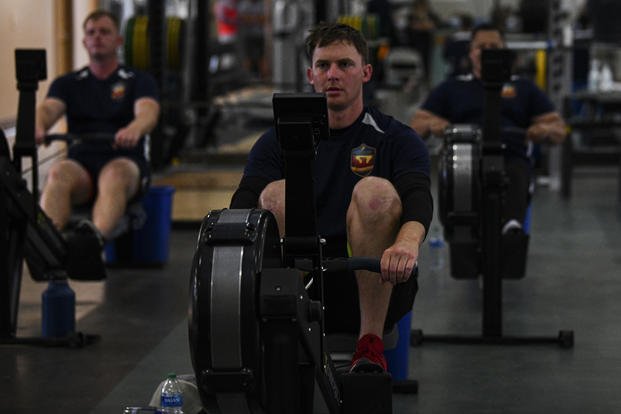Although it is not a very common high school sport, rowing is very popular in some regions in the United States. The sport produces many high school and collegiate athletes who later join the military and serve.
The rower brings many tangible and intangibles skills, as well as strengths and a few weaknesses.
Rowing strengths for the military recruit (intangibles)
Mental toughness. Rowing practices are tough, not just physically and mentally. Most practices are early in the morning when the water is flat. Regionally, these mornings can be very cold. So not only do you have to wake up early and get cold, you physically have to push yourself to a level of borderline exhaustion (max VO2). That requires some mental toughness to push through that aerobic and anaerobic pain.
Competitor/teammate. Rowing is an ultimate team competition. Timing the stroke perfectly is required to make the boat move as efficiently as possible. Rowers join the military with a mindset to be a competitor and, more importantly, a teammate. Being a helpful supporter to fellow teammates, recruits and other members of the military is engrained in the rower’s training and history of practice and competitions. Small-unit teamwork will be a natural progression for the rower.
Rowing strengths for the military recruit (tangibles)
Big pulling strength and cardio endurance. Rowers are highly advanced cardiovascular athletes. They have a remarkable cardiovascular endurance, and for a nonimpact sport like rowing, running is done near daily. They have incredible upper-body strength and muscle stamina, making PT tests easy -- pull-ups and sit-ups.
They also will gain strength during the offseason from lifting weights as well as higher-repetition calisthenics. Pushing the anaerobic threshold is tough and builds a strong, tough athlete. The rower is up there with the toughest.
Obstacle courses. Rowers do very well with obstacle courses. They tend to have good technique from pulling so much that rope climbs are easy, and they have very long-lasting grip strength. The grip of the rower is second to none, which can be a weakness to many on events like these. As long as the rower has spent some time out of the boat working on agility, the obstacle course should not be an issue anaerobically or strength-wise.
Rower's weaknesses for the military recruit
Specifics. Depending upon the branch of service, as long as the typical rower does not need to swim, he will do quite well in the military. However, no matter what service, the rower will need to do push-ups.
Push-ups can be a weakness for the rower, not to mention any pushing exercise like an overhead press, isometric holds overhead, bench presses, dips and push-ups. If the pulling of the rower is not balanced very well, any push exercise can be a challenge. So practice on the pushing exercises, too.
Injury prevention/foundation building. The solid foundation of muscle stamina, endurance and pulling strength enables the rower to have a strong foundation with joint strength of the lower and upper body and a very strong back. However, a typical weakness can be agility and mobility. Getting better at land foot speed to move quickly without being susceptible to typical injuries like sprains, falls, bumps and bruises is a good goal.
Regardless of your athletic background, becoming a tactical athlete requires molding your current strengths to the service requirements and focusing on current weaknesses that could be detrimental to the new recruit or spec-ops student.
If you are a current athlete, keep it up, but during the offseason, get specific to the branch of service that you are considering. You may need to add in rucking, swimming, speed and agility running, and perhaps lifting so the load-bearing events of rucking are not unfamiliar.
Previous athletes discussed:
Cross Country Endurance Running Athlete
Stew Smith is a former Navy SEAL and fitness author certified as a Strength and Conditioning Specialist (CSCS) with the National Strength and Conditioning Association. Visit his Fitness eBook store if you’re looking to start a workout program to create a healthy lifestyle. Send your fitness questions to stew@stewsmith.com.
Want to Learn More About Military Life?
Whether you're thinking of joining the military, looking for fitness and basic training tips, or keeping up with military life and benefits, Military.com has you covered. Subscribe to Military.com to have military news, updates and resources delivered directly to your inbox.


















